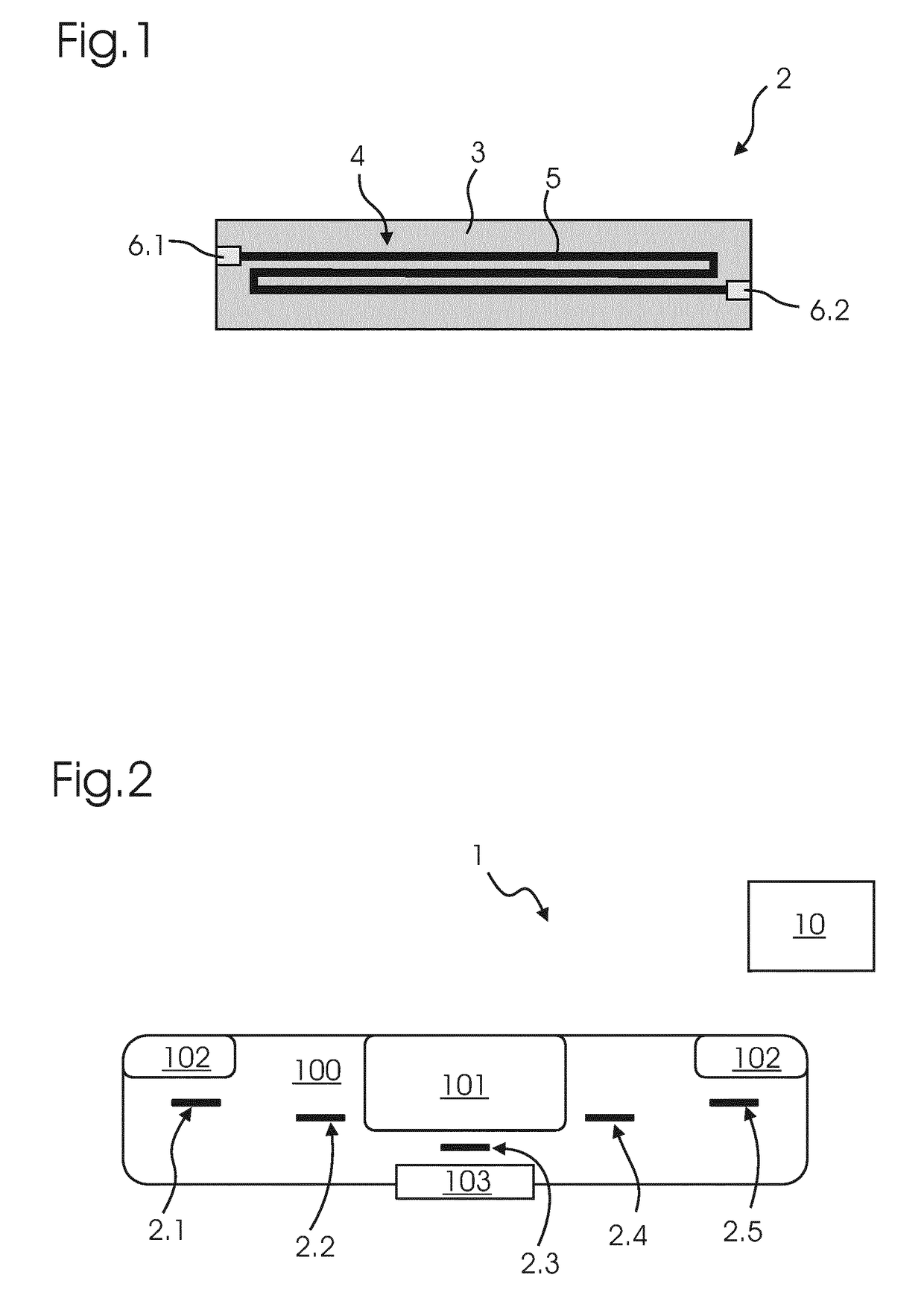Impact sensor
a sensor and impact technology, applied in the field of impact sensors, can solve the problems of inability to deploy safety devices at all, impede detection efficiency, and no safety device can be deployed at all, and achieve the effect of fast and reliable detection and easy integration into various vehicles
- Summary
- Abstract
- Description
- Claims
- Application Information
AI Technical Summary
Benefits of technology
Problems solved by technology
Method used
Image
Examples
Embodiment Construction
[0037]FIG. 1 shows a schematic view of an impact sensor 2 according to an embodiment of the present invention. The impact sensor 2 is generally rectangular in shape having a length of approximately 100 mm and a width of 15 mm. It is understood, though, that the size and the shape of the impact sensor 2 could be varied. The shape is generally given by a rectangular polymer sheet 3, which has a thickness of 100 μm. In the embodiment shown, the polymer sheet 3 is made of polyimide. On this polymer sheet 3, a layer of sensor material 5 is disposed. The sensor material 5 is Nickel-containing hydrogenated amorphous carbon (Ni:a-C:H), which has been disposed on the polymer sheet 3 by sputtering. The thickness of the layer of sensor material 5 is about 60 nm. The sensor material 5, which is part of a strain-sensitive sensor element 4, is electrically connected between two terminals 6.1, 6.2. These terminals 6.1, 6.2 are made of silver ink and have been disposed on the polymer sheet 3 by scr...
PUM
 Login to View More
Login to View More Abstract
Description
Claims
Application Information
 Login to View More
Login to View More - R&D
- Intellectual Property
- Life Sciences
- Materials
- Tech Scout
- Unparalleled Data Quality
- Higher Quality Content
- 60% Fewer Hallucinations
Browse by: Latest US Patents, China's latest patents, Technical Efficacy Thesaurus, Application Domain, Technology Topic, Popular Technical Reports.
© 2025 PatSnap. All rights reserved.Legal|Privacy policy|Modern Slavery Act Transparency Statement|Sitemap|About US| Contact US: help@patsnap.com



